

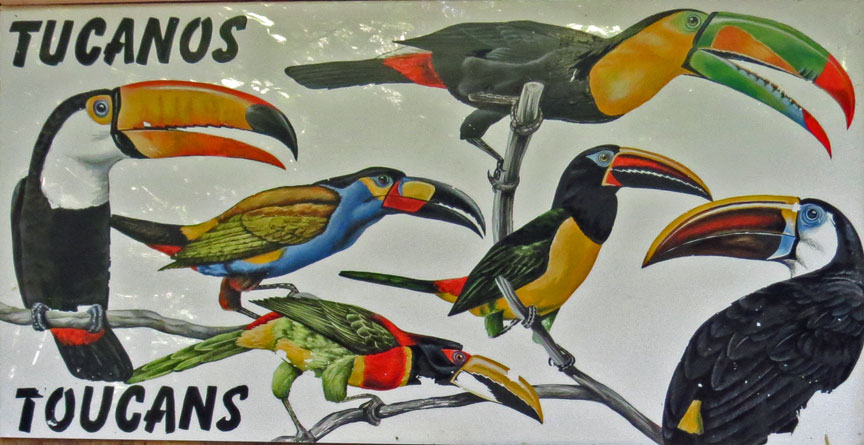
Toucans are members of the family Ramphastidae of near passerine birds from the Neotropics. The Ramphastidae family is most closely related to the American barbets. They are brightly marked and have large, often colorful bills. The family includes five genera and about forty different species. The name of this bird group is derived from the Tupi word tukana, via Portuguese.
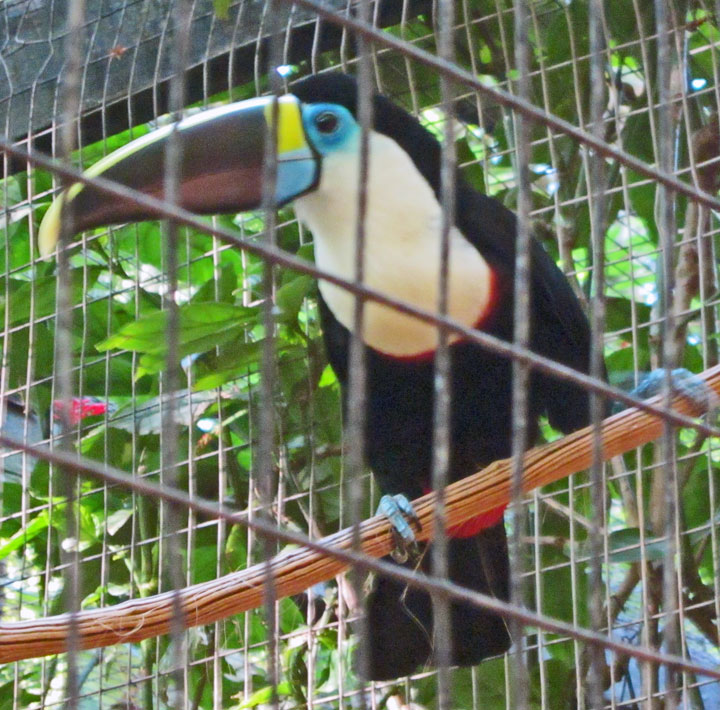
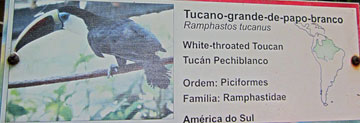

Toucans range in size from the Lettered Aracari (Pteroglossus inscriptus), at
130 g (4.6 oz) and 29 cm (11.5 inches), to the Toco Toucan (Ramphastos toco), at
680 g (1.5 lb) and 63 cm (29 inches). Their bodies are short (of comparable size
to a crow's) and compact. The tail is rounded and varies in length, from half
the length to the whole length of the body. The neck is short and thick. The
wings are small, as they are forest-dwelling birds who only need to travel short
distances, and are often of about the same span as the bill-tip-to-tail-tip
measurements of the bird.
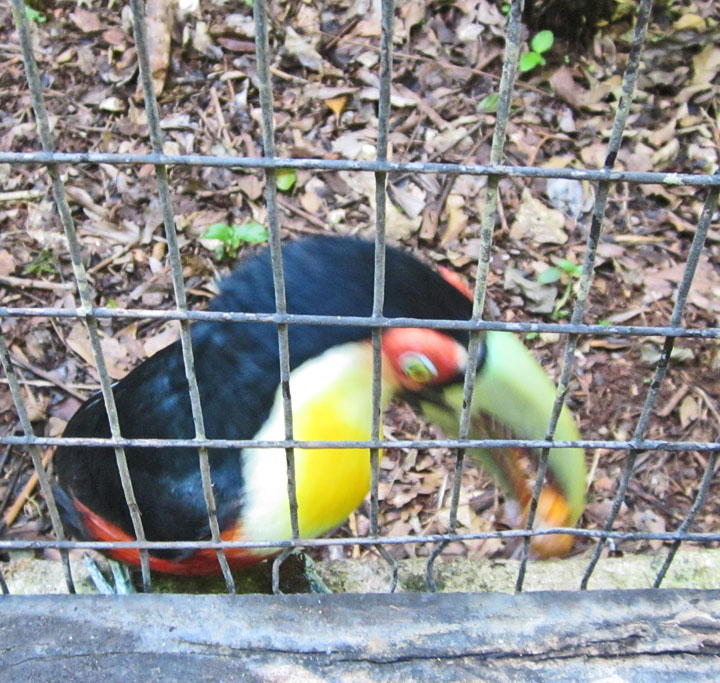
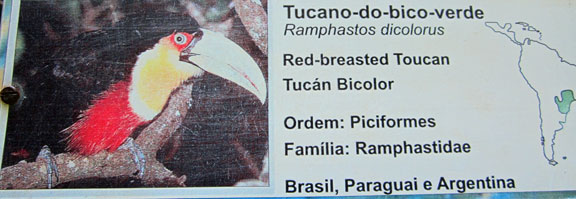
The legs of a toucan are strong and rather short. Their toes are arranged in
pairs with the first and fourth toes turned backward. The majority of toucans do
not show any sexual dimorphism in their coloration, the genus Selenidera being
the most notable exception to this rule (hence their common name, "dichromatic
toucanets"). However, the bills of female toucans are usually shorter, deeper
and sometimes straighter, giving more of a "blocky" impression compared to male
bills. The feathers in the genus containing the largest toucans are generally
black, with touches of white, yellow, and scarlet. The underparts of the
araçaris (smaller toucans) are yellow, crossed by one or more black or red
bands. The toucanets have mostly green plumage with blue markings.
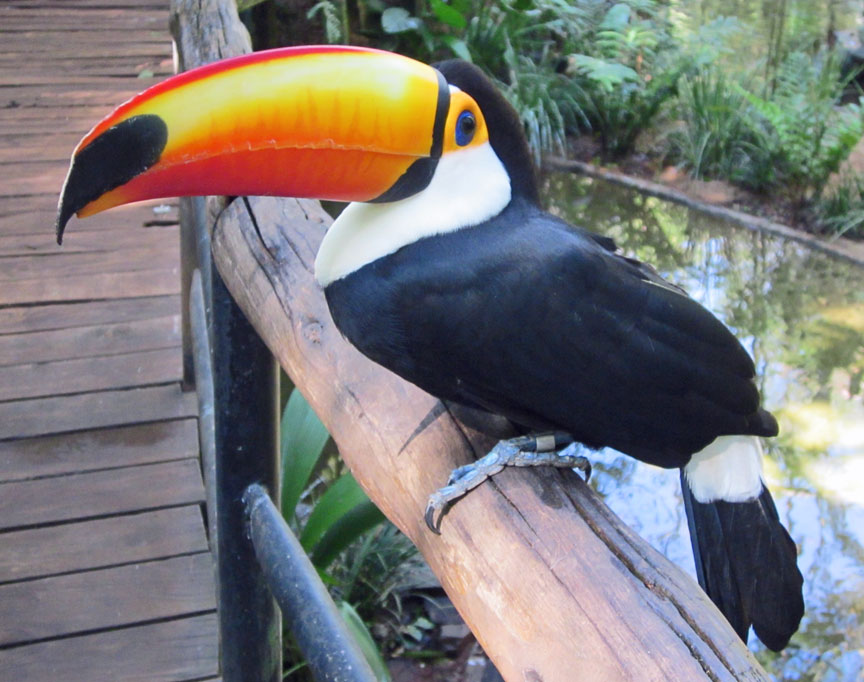
The colorful and large bill, which in some large species measures more than half
the length of the body, is the hallmark of toucans. Despite its size, the
toucan's bill is very light, being composed of bone struts filled with spongy
tissue of keratin between them. The bill has forward-facing serrations
resembling teeth, which historically led naturalists to believe that toucans
captured fish and were primarily carnivorous; today it is known that they eat
mostly fruit. Researchers have discovered that the large bill of the toucan is a
highly efficient thermoregulation system, though its size may still be
advantageous in other ways. It does aid in their feeding behavior (as they sit
in one spot and reach for all fruit in range, thereby reducing energy
expenditure), and it has also been theorized that the bill may intimidate
smaller birds, so that the toucan may plunder nests undisturbed. Also, the beak
allows the bird to reach deep into tree-holes to access food unavailable to
other birds, and also to ransack suspended nests built by smaller birds.
However, as there is no sexual dimorphism in coloration it is unlikely to be a
sexual signal.
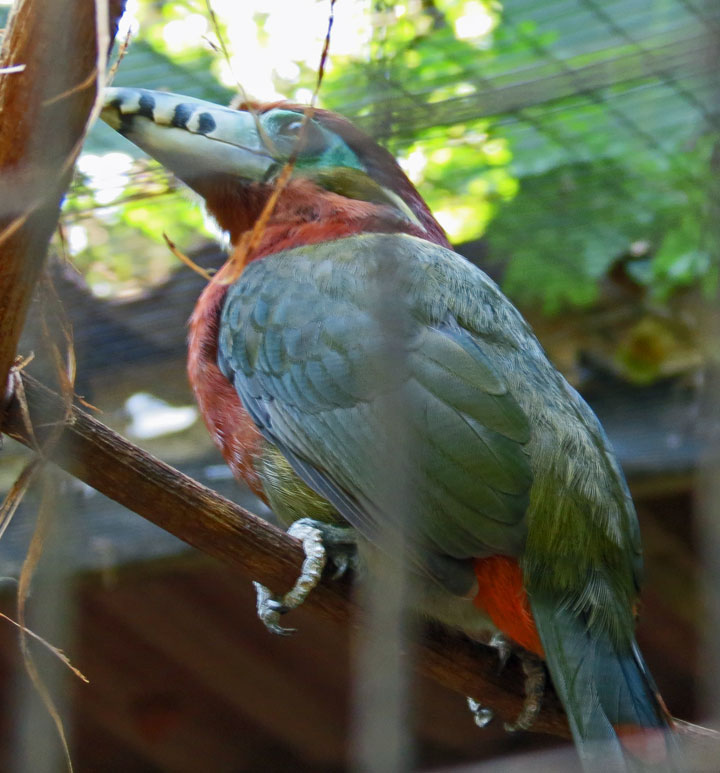
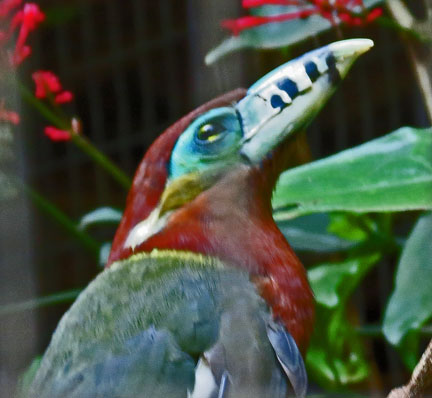
A toucan's tongue is long (up to 14–15 cm, or 6 inches), narrow, grey, and
singularly frayed on each side, adding to its sensitivity as an organ of taste.
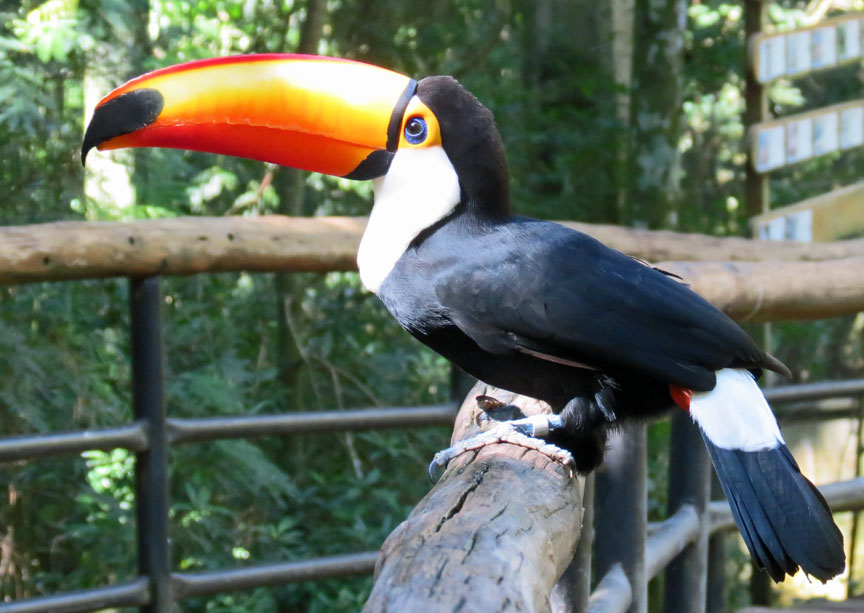
A structural complex probably unique to toucans involves the modification of
several tail vertebrae. The rear three vertebrae are fused and attached to the
spine by a ball and socket joint. Because of this, toucans may snap their tail
forwards until it touches the head. This is the posture in which they sleep,
often appearing simply as a ball of feathers, with the tip of the tail sticking
out over the head.

Toucans are arboreal and typically lay 2–4 white eggs in their nests. They make
their nests in tree hollows and holes excavated by other animals such as
woodpeckers—the toucan bill has very limited use as an excavation tool. When the
eggs hatch, the young emerge completely naked, without any down. Toucans are
resident breeders and do not migrate. Toucans are usually found in pairs or
small flocks. They sometimes fence with their bills and wrestle, which
scientists hypothesize they do to establish dominance hierarchies.
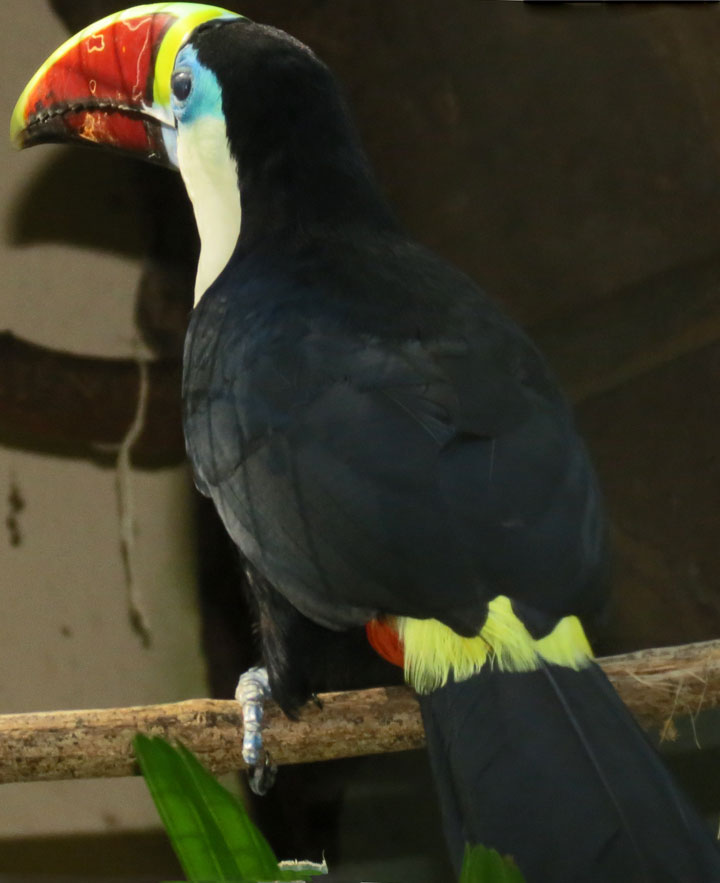
Toucans are native to Southern Mexico, Central and South America, and the
Caribbean region. They generally live in tropical and sub-tropical regions. They
make their nests in tree hollows and holes excavated by other animals such as
woodpeckers—the toucan bill has very limited use as an excavation tool.
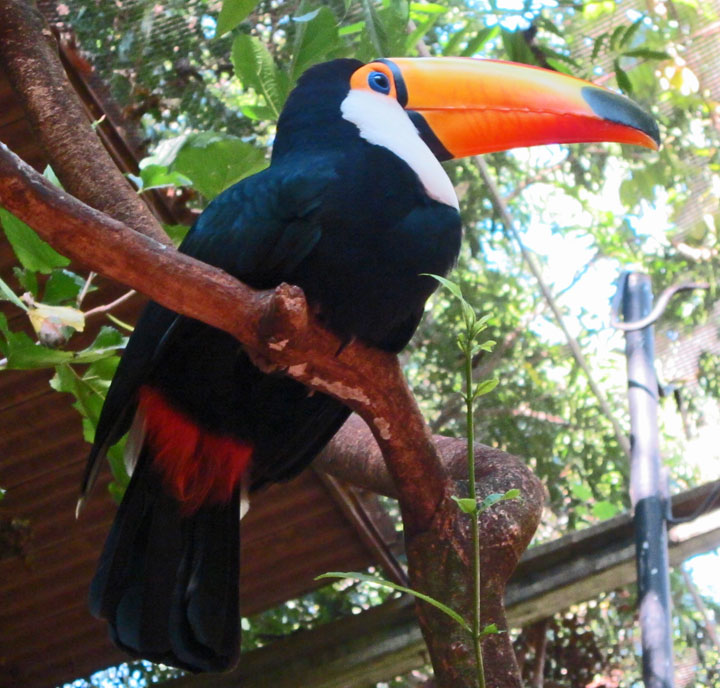
Toucans are primarily frugivorous (fruit eating), but are opportunistically
omnivorous and will take prey such as insects and small lizards. Captive toucans
have been reported to actively hunt insects in their cages, and it is possible
to keep toucans on an insect-only diet. They also plunder nests of smaller
birds, taking eggs and nestlings. This probably provides a crucial addition of
protein to their diet. However, in their range, toucans are the dominant
frugivores, and as such play an extremely important ecological role as vectors
for seed dispersal of fruiting trees.
Text from Wikipedia
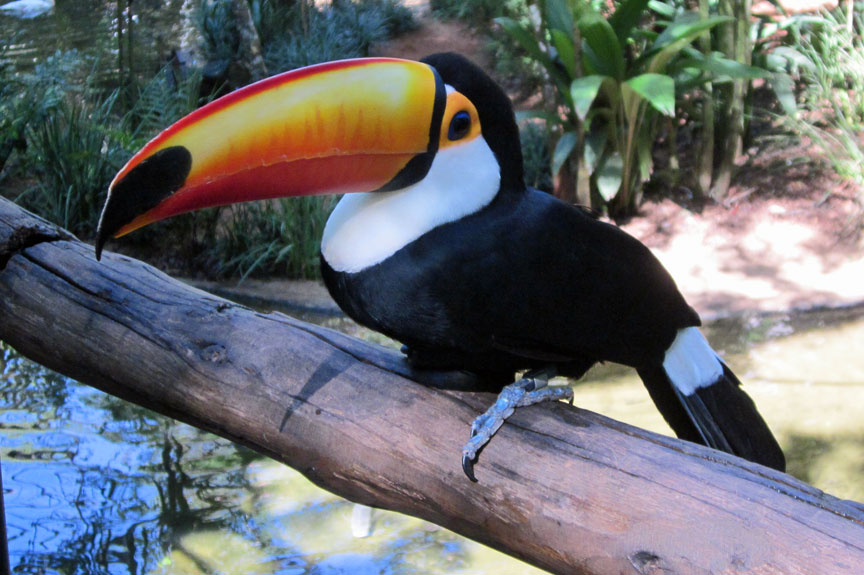

assisting the photographer